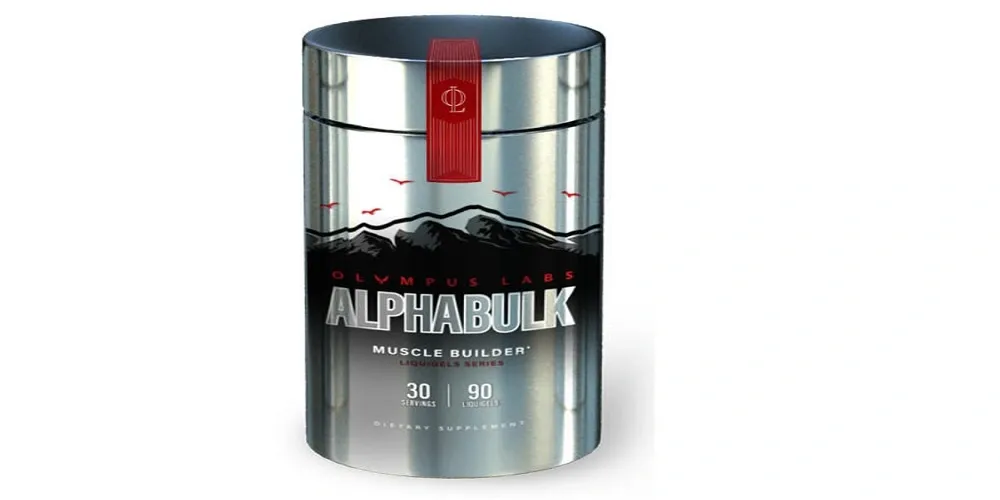Pro Tips for Successful Bulking: The Ultimate Guide

Bulking, in the context of bodybuilding and fitness, involves strategically increasing calorie intake to support muscle growth. However, the process is not as simple as indulging in an unrestricted feast; it requires a thoughtful and well-structured approach. This comprehensive guide aims to demystify the complexities surrounding bulking, providing you with the essential knowledge and practical tips needed to execute a successful and sustainable bulking plan.
In this Ultimate Guide to Properly Bulking, we will delve into the fundamentals of bulking, dispel common misconceptions, and guide you through the intricacies of creating a personalized bulking plan. From understanding the importance of macronutrients to crafting a tailored workout routine, we will explore every facet of the bulking process. Whether you're a novice looking to embark on your first bulking phase or an experienced fitness enthusiast seeking to refine your approach, this guide is designed to equip you with the knowledge and tools necessary for a successful bulking journey.
Prepare to uncover the secrets of optimal muscle growth, learn how to strike the right balance between caloric surplus and training intensity, and discover the key elements that differentiate a haphazard bulk from a well-executed one. By the end of this guide, you'll not only be armed with the information needed to navigate the intricacies of bulking but also be empowered to achieve your fitness goals with confidence and precision. Let's dive into the world of proper bulking and sculpt the physique you've always envisioned.
Basics of Bulking
Bulking fundamentally revolves around the concept of maintaining a caloric surplus. This means consuming more calories than your body expends on a daily basis. The surplus provides the necessary energy to fuel intense workouts and support the muscle-building process. However, it's crucial to strike a balance - a surplus too large can lead to excessive fat gain, while too small may hinder muscle growth.
Macronutrient Ratios
The composition of your diet plays a pivotal role in the success of your bulking journey. Macronutrients, namely proteins, carbohydrates, and fats, need to be strategically balanced. Proteins are essential for muscle repair and growth, carbohydrates provide energy for workouts, and fats play a role in hormone production. Understanding how to distribute these macronutrients according to your individual needs is key to optimizing the bulking process.
Importance of Protein
Protein takes center stage in the bulking process as it serves as the building block for muscle tissue. Adequate protein intake is essential to support muscle repair, enhance recovery, and promote overall muscle growth. Aim for a protein-rich diet, incorporating sources like lean meats, dairy, legumes, energy powder mix, and bulking supplements if necessary, to ensure your body has the necessary amino acids for optimal muscle synthesis.
Setting Realistic Goals
One common misconception in bulking is the assumption that all weight gained is muscle. It's crucial to recognize that some fat gain is inevitable during a bulking phase. Setting realistic expectations about the ratio of muscle to fat gain is vital for mental well-being and long-term success. Strive for a controlled surplus that prioritizes muscle growth while minimizing unnecessary fat accumulation.
Establishing a Timeline
Bulking is not a one-size-fits-all approach, and establishing a realistic timeline is essential. Rapid muscle growth takes time, and patience is key. Consider your individual goals, starting point, and lifestyle when determining the duration of your bulking phase. Setting a reasonable timeline not only helps manage expectations but also allows for a more sustainable and enjoyable journey towards achieving your desired physique.
Selecting the Right Foods
When it comes to bulking, the quality of your food choices is just as important as the quantity. Whole foods, such as lean proteins, whole grains, fruits, and vegetables, should form the foundation of your diet. These foods are rich in essential nutrients, fiber, and antioxidants, providing the raw materials your body needs for optimal function. In contrast, processed foods often contain added sugars, unhealthy fats, and artificial additives, contributing to empty calories that may hinder your progress and compromise overall health.
Nutrient-Dense Options
Prioritize nutrient-dense foods to maximize the benefits of your bulking diet. Nutrient-dense options are rich in vitamins, minerals, and other essential nutrients per calorie. Include a variety of colorful vegetables, leafy greens, whole grains, and lean proteins in your meals. Opting for nutrient-dense choices not only supports muscle growth but also enhances overall well-being, energy levels, and recovery.
Strength Training for Bulking
Resistance training lies at the core of any effective bulking strategy. Engaging in weightlifting and resistance exercises provides the stimulus necessary for muscle hypertrophy, the process of muscle growth. By challenging your muscles with progressively heavier loads, you create micro-tears in the muscle fibers, prompting the body to repair and build stronger, larger muscles. The metabolic demand of resistance training also contributes to increased caloric expenditure, synergizing with your bulking diet.

Designing an Effective Workout Program:
Now let’s design an effective workout program in this ultimate guide to bulking:
1. Compound Exercises
Focus on compound exercises that engage multiple muscle groups simultaneously. Compound movements, such as squats, deadlifts, bench presses, and overhead presses, recruit more muscle fibers, leading to greater overall muscle activation and growth. Incorporating these compound exercises into your routine ensures that you target major muscle groups efficiently, optimizing your time in the gym and promoting systemic growth.
2. Progressive Overload
Central to any successful bulking workout program is the principle of progressive overload. This involves consistently increasing the demands placed on your muscles over time. Gradually lifting heavier weights, increasing the number of repetitions, or reducing rest periods between sets are effective ways to implement progressive overload. This constant challenge is essential for continued muscle adaptation and growth.
3. Rest and Recovery
While the intensity of your workouts is crucial, so is allowing adequate time for rest and recovery. Muscles need time to repair and grow stronger after being subjected to resistance training. Ensure you incorporate rest days into your weekly routine and prioritize quality sleep. Additionally, consider incorporating active recovery techniques, such as foam rolling or light cardio, to enhance circulation and alleviate muscle soreness. Balancing the stress of training with sufficient recovery is key to preventing burnout and maximizing the benefits of your bulking program.

Benefits of Cardio
Contrary to common misconceptions, incorporating cardiovascular exercise into your bulking routine offers various benefits beyond fat loss. Cardio helps improve cardiovascular health, enhances overall endurance, and can expedite recovery by promoting blood circulation. Additionally, it aids in maintaining a healthy metabolism, which is crucial when operating in a caloric surplus during bulking. Engaging in regular cardio can also support mental well-being, reducing stress and promoting a positive mindset throughout your bulking journey.
Finding the Right Balance
While cardiovascular exercise brings numerous advantages, finding the right balance is essential. Excessive cardio can potentially interfere with your ability to maintain a caloric surplus, impeding muscle growth. Striking a balance between cardiovascular workouts and resistance training is key. Aim for 2-3 moderate-intensity cardio sessions per week, adjusting the duration and intensity based on your individual goals and how your body responds. Pay attention to how cardio impacts your recovery and adjust accordingly to ensure it complements, rather than hinders, your bulking efforts.
Types of Cardiovascular Exercises
- High-Intensity Interval Training (HIIT): HIIT involves short bursts of intense exercise followed by brief periods of rest or lower-intensity activity. This approach is time-efficient and can enhance cardiovascular fitness while minimizing the potential for muscle loss.
- Steady-State Cardio: Steady-state cardio involves maintaining a consistent, moderate intensity throughout the duration of the exercise. Activities like brisk walking, jogging, or cycling for extended periods provide a steady cardiovascular challenge without overly taxing your body.
- Low-Impact Options: Consider low-impact cardio options, such as swimming or cycling, to reduce stress on joints while still reaping the cardiovascular benefits. These activities can be particularly beneficial for individuals prone to joint issues or those looking to diversify their cardio routine.
Selecting the type of cardiovascular exercise that aligns with your preferences, fitness level, and overall goals ensures a sustainable and enjoyable addition to your bulking program. Remember, the key is to integrate cardio in a way that supports your muscle-building efforts without compromising recovery or nutritional goals.
Monitoring Progress
Monitoring your body's physical changes goes beyond simply stepping on a scale. Regularly tracking key body measurements, such as waist circumference, chest size, and muscle girth, provides a more comprehensive view of your progress. These measurements offer insights into muscle gain and fat distribution, allowing you to adjust your training and nutrition plan accordingly. Keep a consistent schedule for measurements, such as every two weeks, to observe trends over time.
Adjusting the Plan as Needed
Flexibility is crucial in any bulking journey. As your body adapts to the training and nutritional stimuli, it may be necessary to make adjustments to your plan. Pay attention to how your body responds to the caloric surplus, training intensity, and recovery protocols. If you observe unexpected changes or stagnation in progress, be prepared to modify your workout routine, reassess caloric intake, or reconsider your macronutrient distribution.
Recognizing Plateaus and How to Overcome Them
Plateaus are a natural part of any fitness journey, and recognizing them early is essential for continued progress. If you find yourself hitting a plateau in muscle growth or strength gains, consider implementing changes such as varying your workout routine, increasing training intensity, or adjusting your caloric intake. Plateaus can also be an opportunity to reassess your goals, ensuring they remain realistic and aligned with your current fitness level and lifestyle.
Supplements for Bulking
Here are the supplements for bulking:
1. Protein Supplements:
Protein supplements, such as whey protein powder, can be a convenient and effective way to meet your daily protein requirements, especially if it's challenging to consume sufficient protein through whole foods alone. These supplements are easily digestible and can be consumed post-workout or as a snack to support muscle recovery and growth.
2. Creatine:
Creatine is a naturally occurring compound that plays a crucial role in the production of energy during high-intensity exercise. Supplementing with creatine has been shown to enhance strength, muscle mass, and overall exercise performance. Consider incorporating creatine into your bulking regimen, following recommended dosages for optimal results.
3. Other Helpful Supplements:
While the foundation of your nutrition should come from whole foods, certain supplements can complement your bulking efforts. These may include branched-chain amino acids (BCAAs) to support muscle recovery, omega-3 fatty acids for overall health, and vitamin D for bone health. Keep in mind that supplements are meant to supplement, not replace, a well-balanced diet.
Integrating these supplements judiciously, based on your individual needs and goals, can contribute to the effectiveness and sustainability of your bulking plan. Always consult with a healthcare professional or a registered dietitian before adding new supplements to your routine, especially if you have pre-existing health conditions.

End Note
Finally, the supplement guide underscores the importance of using supplements judiciously to fill nutritional gaps and enhance specific aspects of your bulking plan. From protein supplements to creatine and other helpful additions, these can complement your diet and training regimen when used thoughtfully.
As you embark on your bulking journey armed with this comprehensive guide, remember that achieving your fitness goals is a marathon, not a sprint. Embrace the process, stay consistent, and adapt as needed. Whether you're a seasoned fitness enthusiast refining your approach or a beginner taking the first steps, this guide empowers you to navigate the world of bulking with confidence. May your journey be filled with gains, both physical and personal, as you sculpt the physique you aspire to achieve.
